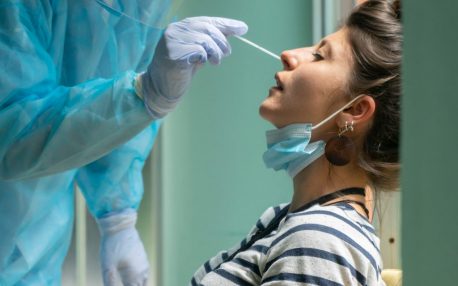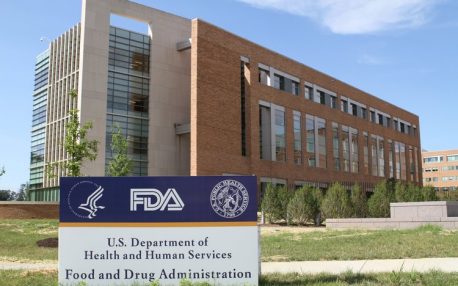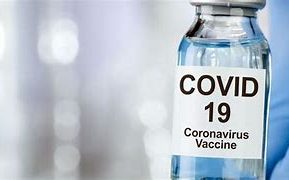Skip to content
Staggering COVID-19 vaccination of health care personnel to protect health care quality and improve patient safety
3rd December 2020 by Anthony Salandy, Ph.D., M.Sc.
Imagine managing a hospital medical unit with a staff of 50 and scheduling them to receive the first dose of a COVID-19 vaccine on a Monday and Tuesday of a particular week. Subsequently, approximately 80% of your staff gets vaccinated on those two days. And, by Thursday and Friday of that same week, 25% of your scheduled staff call out sick due to systemic reactions to the COVID-19 vaccine. Maybe, a greater percent call out sick after receiving the 2nd dose a few weeks later.
Envision that scenario occurring across hospital units (e.g., Oncology, Med-Surg, Pediatrics, ICU) and departments (e.g., food services, environmental engineering, waste management). Moreover, picture it occurring in long-term care facilities (LTCFs) and rural ambulatory care/provider office settings – who are already experiencing limited staffing due to the COVID pandemic.
Increasing participation of communities of color in COVID-19 vaccine clinical trials.
24th November 2020 by Anthony Salandy, Ph.D., M.Sc.
The diversity of participants in COVID-19 vaccine clinical trials would help provide valuable information on the safety, efficacy, and vaccine response in historically under-represented and under-studied populations. Data indicate people of color shoulder a disproportionate disease burden for COVID-19. For instance, Blacks are more than two times as likely to be hospitalized with COVID-19 than their White counterparts.
Safe and effective COVID-19 vaccines are seen as the last line of defense for an ever-expanding pandemic. With this in mind, some have argued, clinical development of a COVID-19 vaccine should be representative of those most affected by the disease.
Could employers and states mandate COVID-19 vaccinations? Here’s what the courts have ruled
23rd November 2020 by Debbie Kaminer, J.D.
A safe and effective vaccine could end the coronavirus pandemic, but for it to succeed, enough people will have to get inoculated.
Recent polls suggest that the U.S. is far from ready. Most surveys have found that only about two-thirds of adults say they would probably get the vaccine. While that might protect most people who get vaccinated, research suggests it may be insufficient to reach herd immunity and stop the virus’s spread.
Tiberius – a data mining software designed by Palantir – will be critical in helping community health workers target COVID-19 vaccination education efforts.
11th November 2020 by Dr. Anthony Salandy
It is imperative for states to identify distribution bottlenecks, inventory constraints, and gaps in administration of the COVID-19 vaccine across key populations and geographical contexts for the vaccination program to be effective. That is why Tiberius, a data mining software designed by Palantir, is a critically important tool in our fight against the virus as the COVID-19 vaccine is rolled out.
College campuses must plan for mandatory COVID-19 vaccination.
27th October 2020 by Dr. Anthony Salandy
As evidence grows uncovering the role university and college campuses play in community spread of the COVID-19 disease, some argue for mandatory COVID-19 vaccination of college students, faculty, and staff. Mandatory requirements for the flu vaccine are already in place at major colleges and universities across the country. Similar mandatory requirements are being considered for the COVID-19 vaccine. In order to move forward with such a plan, serious consideration needs to be given to an implementation strategy. This paper highlights some of the issues that need to be considered by higher education administrators for the implementation of a campus-wide COVID-19 vaccination program.
Why COVID-19 screening and testing are important for developing a highly effective vaccine.
25th Oct 25th 2020 by Dr. Anthony Salandy
Healthcare workers need training on the COVID-19 vaccination program.
8th October 2020 by Dr. Anthony Salandy
COVID-19 Vaccination Program capacity can be conceptualized in terms of the ability to provide resources to carry out the intended activity – in this case it is the distribution of the COVID-19 vaccine. Therefore, what needs to be in place before jurisdictions begin distributing the COVID-19 vaccine?
Challenges to an effective rollout of the COVID-19 vaccine.
7th October 2020 by Dr. Anthony Salandy
There are a few COVID-19 vaccine candidates in Phase III clinical trials. The FDA and its advisory groups [e.g., Vaccines and Related Biological Products Advisory Committee (VRBPAC)] are working with Pharmaceutical companies to review the data on safety and efficacy. CDC and the Advisory Committee for Immunization Practices (ACIP) also are meeting to review data and recommend practices and protocols for vaccine administration. Jurisdictions are ramping up their distribution, storage, and advocacy activities. Commercial enterprises are being primed to ship and store vaccines. Even though this is a herculean effort, it does come with significant challenges. Below are a few challenges that must be considered prior to the COVID-19 vaccine rollout.
Ethnic minority participation: what can drug companies do to increase enrollment in COVID-19 vaccine trials?
6th October 2020 by Dr. Anthony Salandy
COVID-19 Phase III vaccine trials have almost reached their recruitment targets. Drug companies have to follow FDA guidance on the demographic make-up of the study sample makeup. For the two leading vaccine candidates – How representative is the study sample? Are communities of color proportionately represented? The answer to these important questions may help drive confidence in the vaccine development process.
The COVID-19 vaccine clinical trials have been fast-tracked by the FDA: Is that good or bad for the consumer?
5th October 2020 by Dr. Anthony Salandy
Fast track is a process designed to facilitate the development, and expedite the review of drugs to treat serious conditions and fill an unmet medical need like COVID-19 disease. But fast does not mean sloppy. Early and frequent communication between the FDA and a drug company is encouraged throughout the entire drug development and review process for vaccine candidates that receive a Fast Track designation.
CDC releases their COVID-19 Vaccination Program Playbook.
4th October 2020 by Dr. Anthony Salandy
Immunization with a safe and effective COVID-19 vaccine is a critical component of the United States strategy to reduce COVID-19-related illnesses, hospitalizations, and deaths and to help restore societal functioning. The goal of the U.S. government is to have enough COVID-19 vaccine for all people in the United States who wish to be vaccinated. Early in the COVID-19 Vaccination Program, there may be a limited supply of COVID-19 vaccine, and vaccination efforts may focus on those critical to the response, providing direct care, and maintaining societal function, as well as those at highest risk for developing severe illness from COVID-19.











